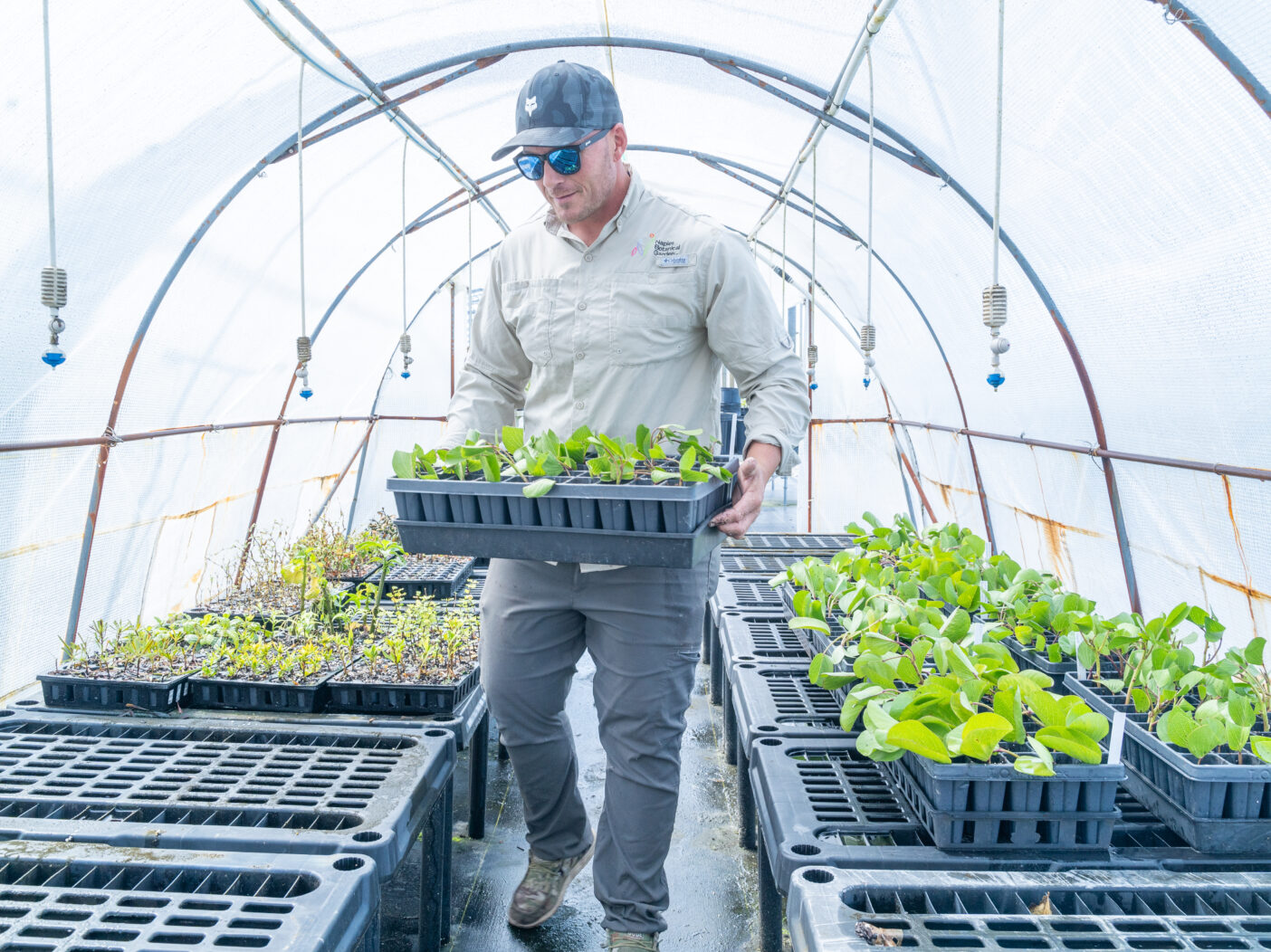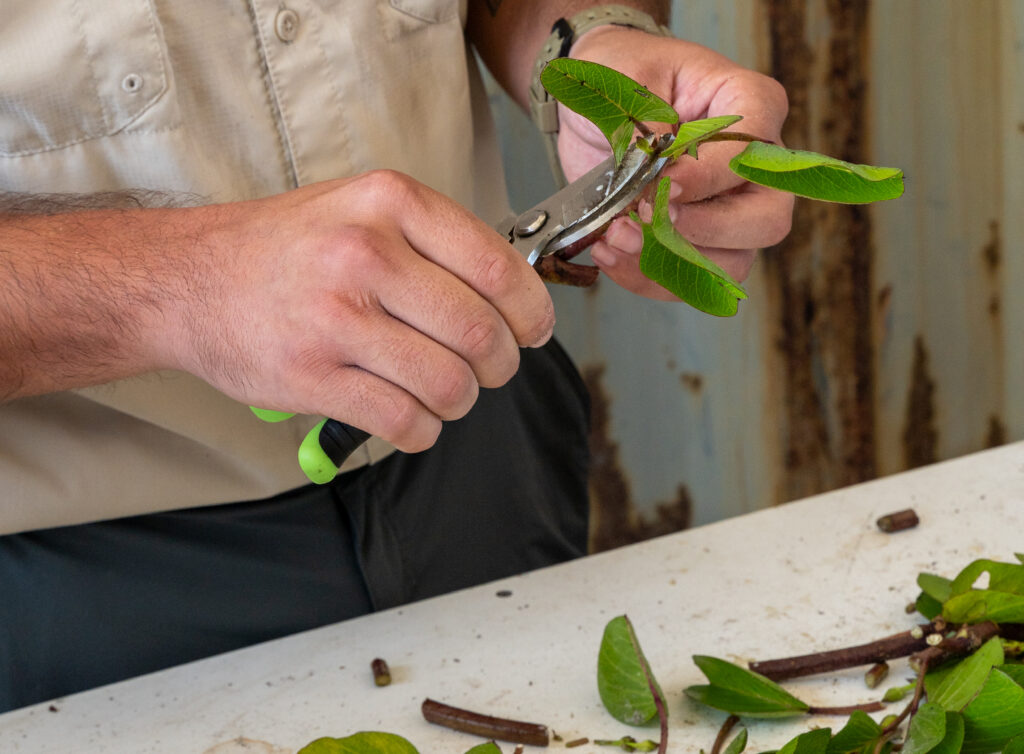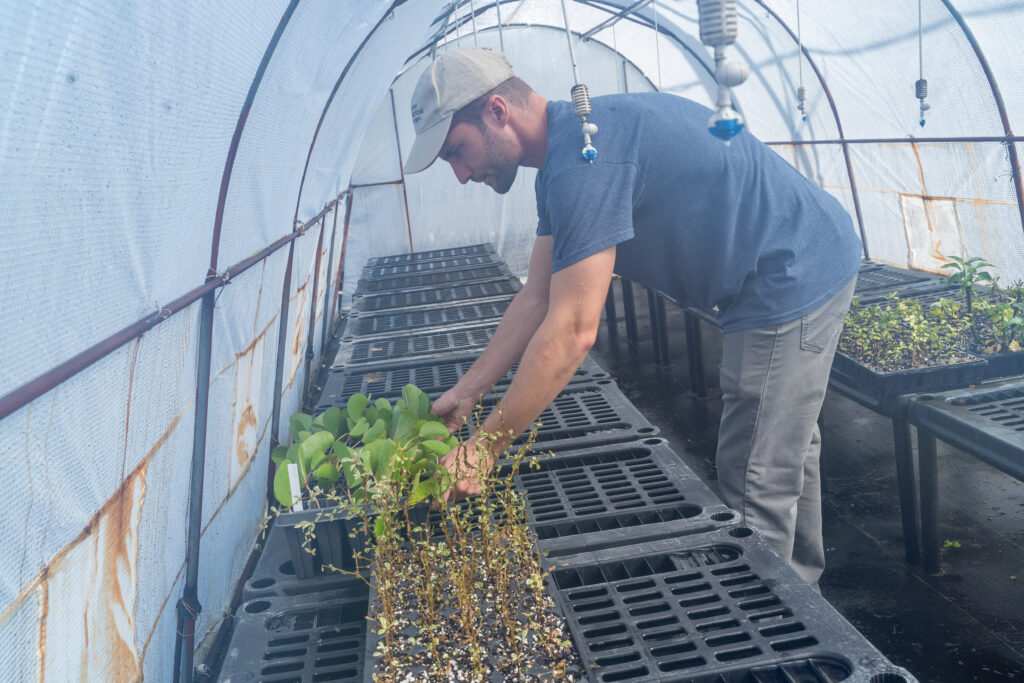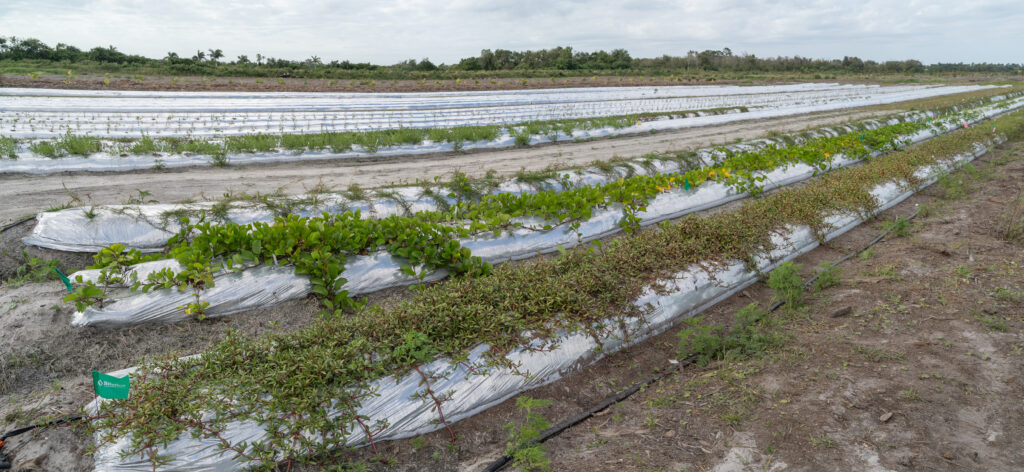
This Mother’s Day, we take a look at the plants that make beach restoration possible.
Large-scale restoration projects often require thousands, even millions of plants to be raised to maturity in a nursery before out-planting can begin. You can’t pluck that many from the wild. Amazon Prime is not going to drop them on your doorstep. So, what do you do?
Turn to mothers.
To amass enough plants for a restoration project, we grow a collection of stock plants, dubbed “mother plants.” They’re produced specifically for their offspring — seeds and cuttings that, in turn, will create the next generation of plants. Maintaining mother plants in a nursery removes the time-consuming need to repeatedly collect seeds or cuttings in the wild.

In Naples Botanical Garden’s nurseries, conservationists have produced tens of thousands of mother plants representing a dozen beach dune species as part of a major beach dune research and restoration project. From them, the team efficiently multiplies the total number of plants without having to return to the field. Mother plants of some species, such as coastal groundcherry (Physalis angustifolia), are especially prolific. The fruits of a single mother plant yield nearly 500 new seedlings.

The mother plants themselves originate from local field expeditions in which Garden conservationists collected seeds and cuttings from the dune species integral to the restoration project. By conducting germination experiments and developing propagation protocols, the team now understands the quickest, most cost-effective methods to grow a mother plant to maturity.

Ultimately, wild-sourced mother plants will be essential to producing the millions of coastal “offspring” essential to restoring our coastline following Hurricane Ian and building resilience against future storms. It is exciting to envision the potential for large-scale restoration that our mother plants make possible.
Photos by John Eder

About the Author
Sam Amodeo is a Conservation Horticulturist driven by his passion for exploring the outdoors and protecting the natural world.

